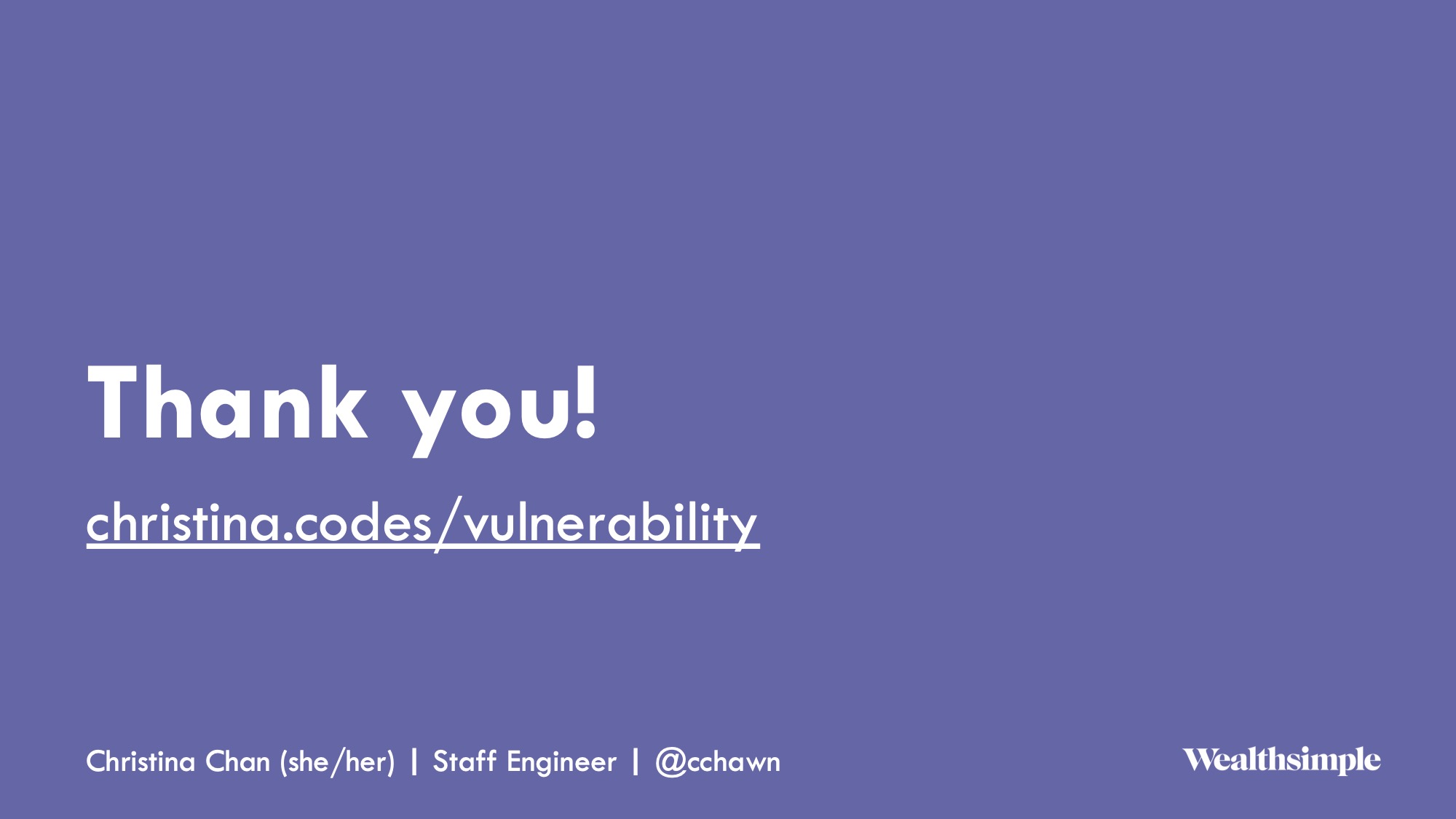Talk Notes: Leading With Vulnerability
Thank you to the organizers of StaffPlus New York where I originally prestended this version of the slides! 💖
Abstract
Have you ever had thoughts like "I should know how to do this" or "I shouldn't share that with my team; it will make me look like I don't deserve to be here"?
The idea of asking questions, admitting when you don't know something, or sharing when you're struggling might make you uncomfortable, it certainly has for me. But the vulnerability you demonstrate by doing these things is precisely what makes a great leader.
There is a fear that vulnerability will be seen as weakness, when it's actually the root of building authentic and meaningful connections. Once you can push past the discomfort, being vulnerable at work opens the door to creativity, innovation, and trust with your team.
In this talk, I share my personal journey with vulnerability, as I learned to reframe my discomfort as opportunities for growth and eventually find the courage to be vulnerable.
Slides
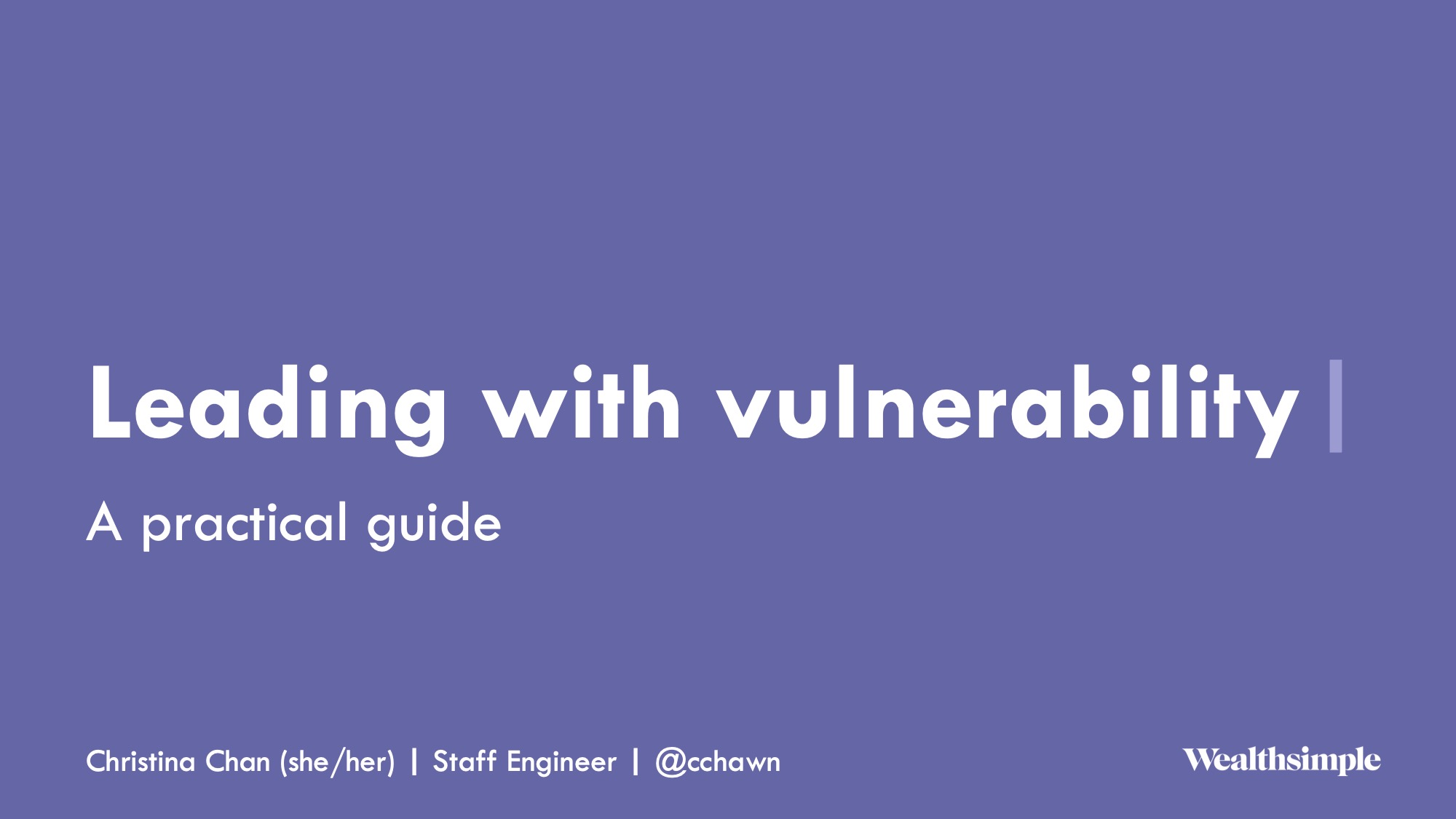
As leaders in engineering, we all share some common goals. We want to focus on high-impact work and build the trust and influence required to get it done. We want people to feel comfortable coming to us with their problems and ideas, asking questions, and sharing their honest opinions.
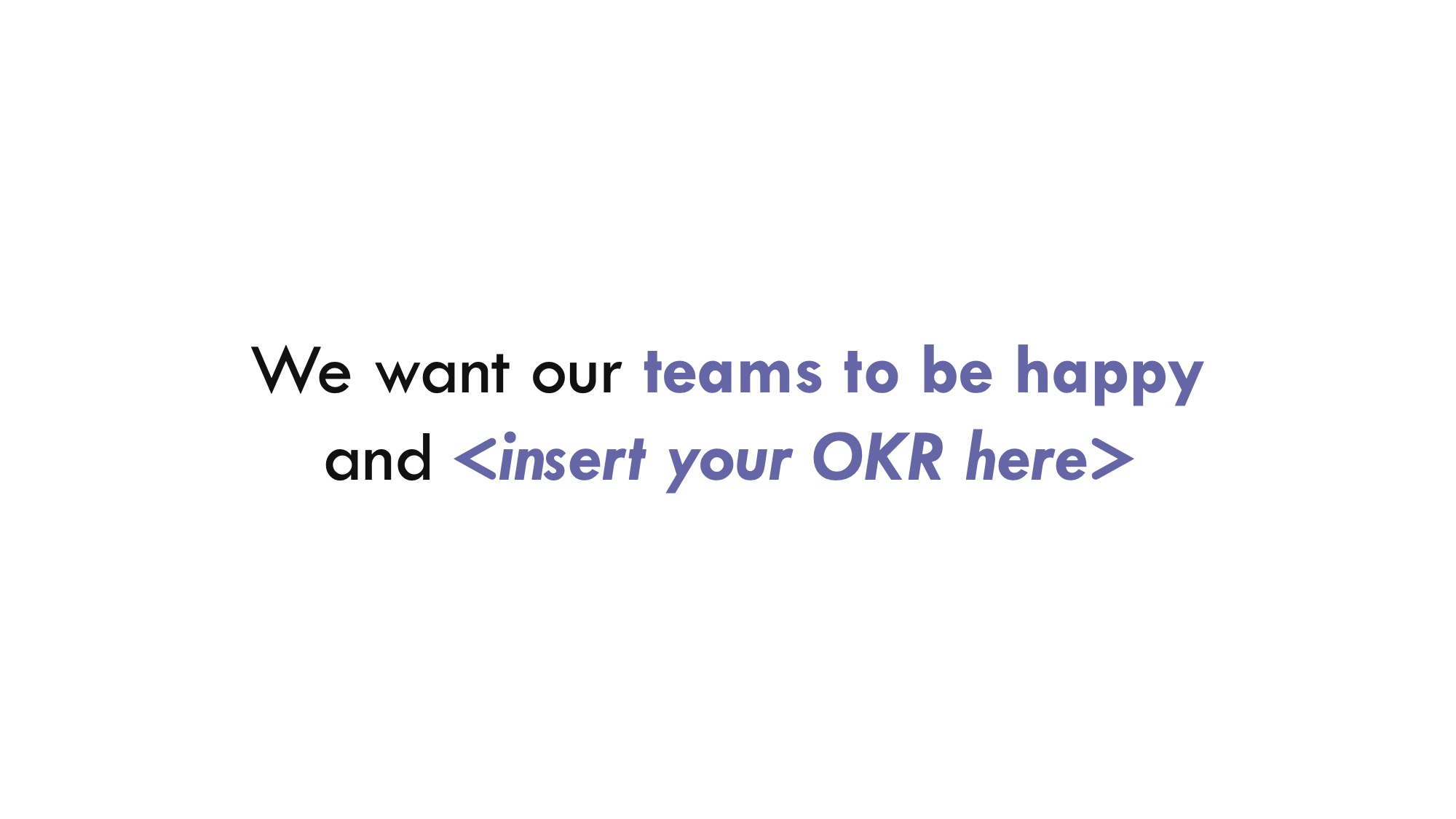
And ultimately, we want our teams to be happy and insert your OKR here.
That sounds all well and good, but realistically, so many things get in the way and make it harder for us to accomplish our goals.

Maybe you've noticed that your team doesn't ask for help. Or recognized that it takes a long time for concerns to be raised if they’re even brought up at all. Or maybe you've been told that other developers find you intimidating, and they don’t feel like they can disagree with you.
What all these things point to is a lack of trust and psychological safety. We can’t accomplish our goals without creating a psychologically safe space for our teams.

Extensive research shows how psychological safety — team members feeling safe enough to take risks and be vulnerable in front of each other — is the most important dynamic that sets high-performing teams apart.
Okay. So now, you might be looking at me and thinking — hey Christina, I'm just one person; how can I actually do anything about this?
And I get it. It's easy to brush off these problems and dismiss them as organizational or cultural issues that are too hard to fix alone. But as leaders and role models, we have the power and privilege to create the environment and culture we want.
So, how do we do that? How do we create an environment where our teams feel safe? As you've probably guessed, we need to lead by example and lead with vulnerability.
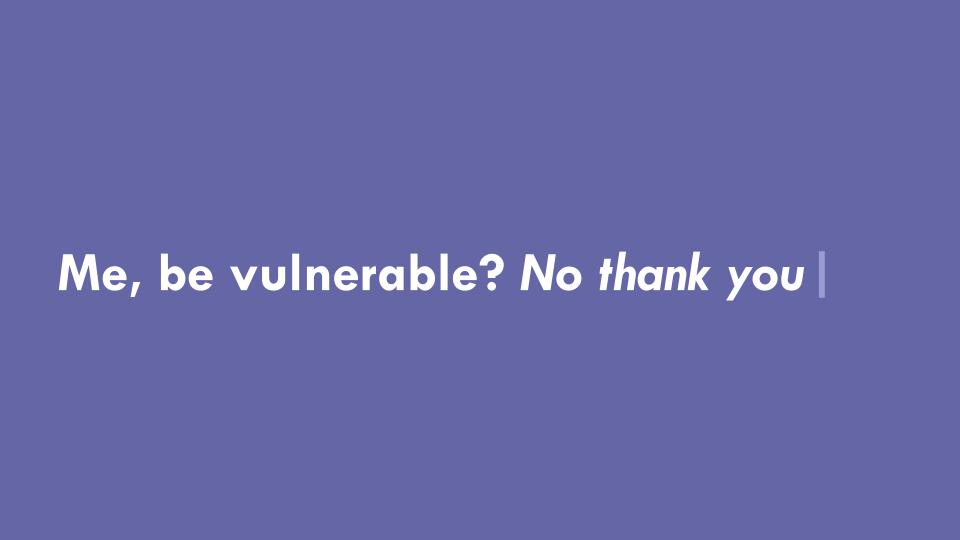
If your initial reaction to hearing that is, "oh wow, absolutely no," you're not alone. Vulnerability in the workplace can make us feel uncomfortable, like we’re letting our guard down.
I had been taught and believed that I always needed to be professional. I needed to maintain my distance and always project a confident and composed image; otherwise, people wouldn't take me seriously.
I was so afraid to show any vulnerability that whenever I was starting to feel a little bit vulnerable, I also felt immense shame, like I was letting my image slip and that people would "find out" about the real me. This fear and shame crept up whenever I started something new, needed to ask a question, made a mistake, or struggled to balance work and my personal life. I didn't see other people openly talk about these things, so I believed that if I did it myself, I would be seen as weak or like I didn't deserve to be here.
In my mind, being vulnerable would undermine my efforts to be respected, relied on, and trusted. So I kept my guard up instead.

For me, this looked like forcing myself to give 110% at work every single day — no matter what was going on in my personal life, never making a mistake — and beating myself up if I ever did, and spending so much time figuring things out on my own — instead of asking for help. In short, I was avoiding being vulnerable at all costs.
But what I was actually doing was limiting the connections and trust I could build with my team, and with the effort required to hide from feeling vulnerable, I was also running myself straight toward burnout. Eventually, I realized something needed to change.

Around this time, I came across Dr. Brené Brown, and her amazing TED Talk about the Power of Vulnerability (if you haven't watched it yet I recommend that you do!). After watching that, I read her book Daring Greatly. And what she had to say fundamentally changed the way that I think about vulnerability.
Brené Brown defines vulnerability as "uncertainty, risk and emotional exposure." Which I thought, great! That totally aligns with my views.

But she also says, "vulnerability is the birthplace of love, belonging, joy, courage, empathy, and creativity," and that it's the root of building authentic and meaningful connections. Now that didn't quite fit.
We'll skip ahead a bit here, but with a lot of reflection, reading, and let's be honest here — therapy. I learned that you can't avoid ever feeling vulnerable, without shutting yourself out from all the great things vulnerability opens the doors to.

Now, just because we know that being vulnerable is "good for you" doesn't mean that the feeling of discomfort immediately disappears. It takes a lot of effort and practice to sit with that discomfort and work through it.

Something that has helped me is to reframe my anxiety and nerves as excitement and an indication that whatever I'm nervous about is an opportunity for growth.
For example. Speaking in front of a large, live audience? That could be pretty nerve-wracking, but the body sensations of anxiety and nervousness align pretty closely with how it feels to be excited about something.
So, here I am, being vulnerable and really excited to be speaking in front of all of you!
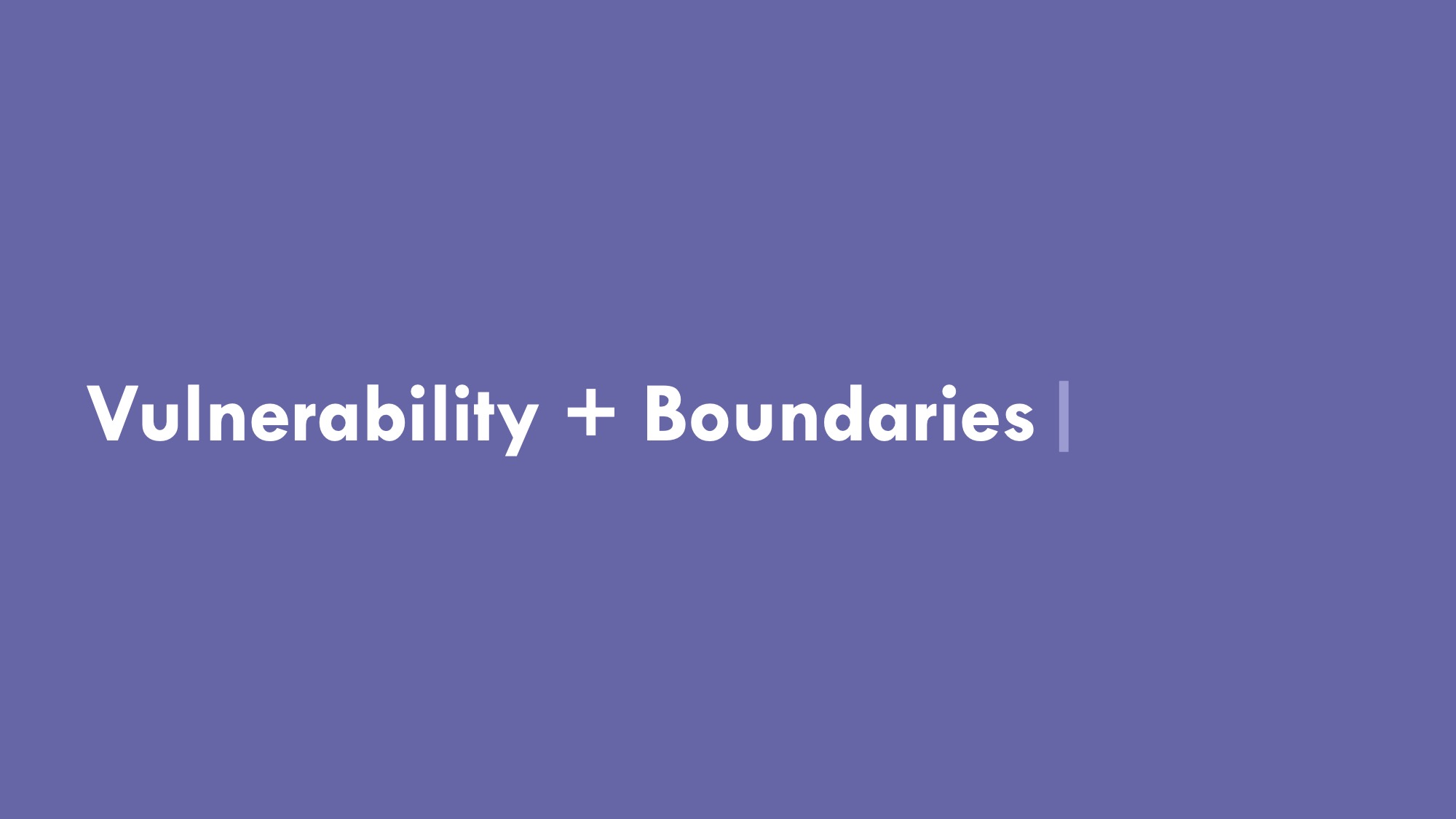
There's a common misconception about vulnerability — we think that to be vulnerable, we need to disclose absolutely everything, divulge every aspect of our personal lives, and lay everything out on the table. But that's not true.
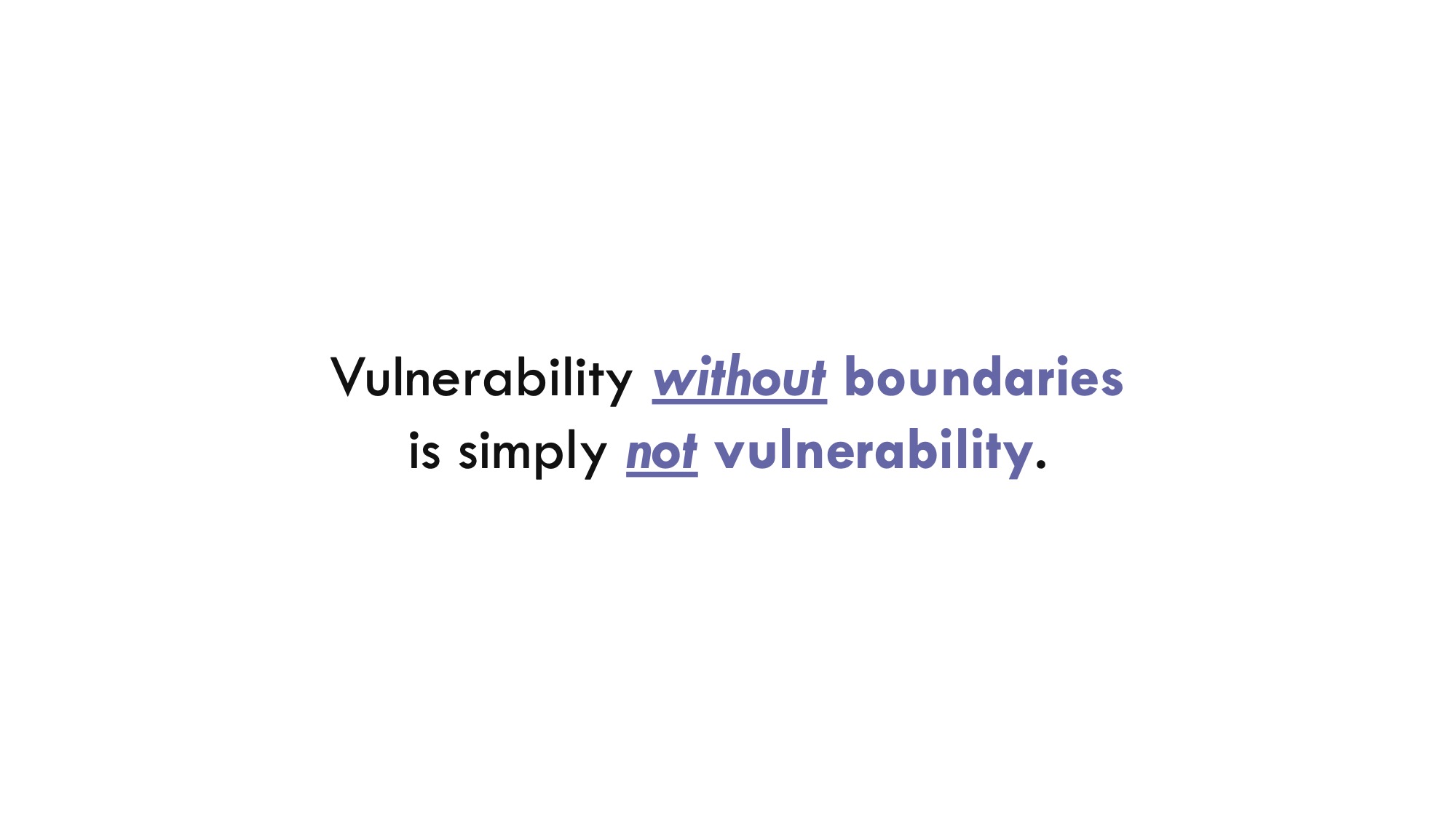
Vulnerability without boundaries is simply not vulnerability.
Let’s use a theoretical example. Say you’re a senior leader, and your team is coming to you expressing concerns about the stability of the tech industry. Sounds familiar.
So imagine you say: “I’m going to be vulnerable. I’m freaking out. I’ve never experienced a downturn like this and I’m scared we’re all going to get laid-off.”
So while your feelings are valid — saying it like that is unfair and likely going to scare your team. If you genuinely do feel that way, you should absolutely share it with someone — but probably not the people that are looking to you as a source of stability and guidance.
Instead you can say: “Your concerns are totally valid, and I feel a similar way. I’ve never been through something like this before. If you’re feeling overwhelmed I’m happy to talk more one on one.”
Vulnerability is not about oversharing or dumping your feelings on someone. We have to think about why we’re sharing and, equally as important, with whom. Ask yourself: Is this sharing appropriate, and will it move your work, connection or relationship forward? Or is it just going to make you feel better in the short-term?

So hopefully, I've convinced you, and you're ready to go forth and practice vulnerability. I'll share some strategies and tips to get you started.
I tried to come up with a nice acronym, but the best I have for you is this…

ASDF
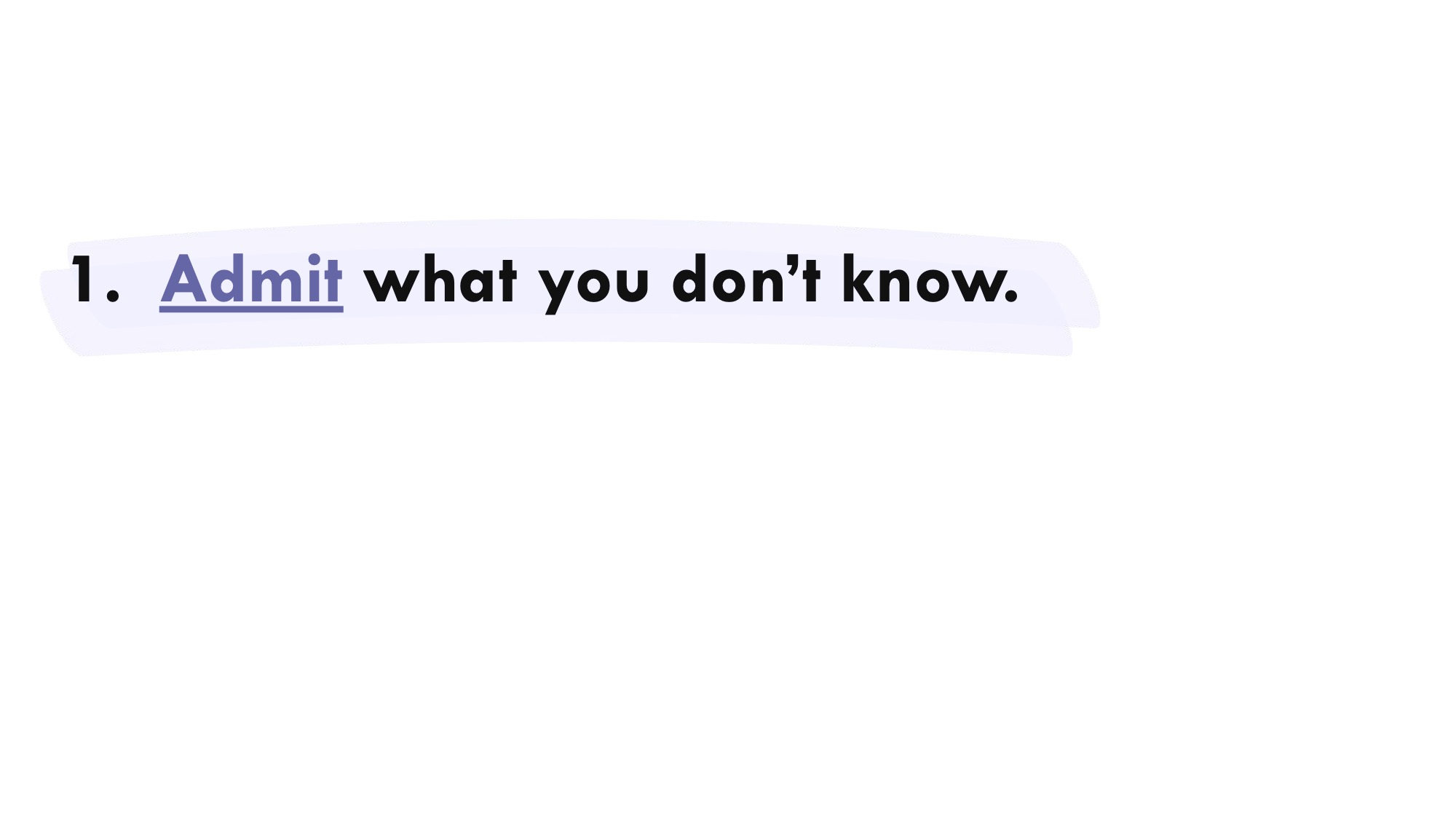
Admit what you don't know.
If you pretend like you know everything, you're closing the door to curiosity and continuous learning and signalling to your team that perfection is expected. Being vulnerable means we ask questions when we don't know something, we ask for help when we need it, we say no when something doesn’t fit with our time, energy, or values, we ask for and listen to feedback, and we don't blame people when a mistake is made.
Say your team uses an acronym all the time. In theory you know what it means, but you don’t actually know what the acronym stands for. You can go on continuing to not know, or you can ask, what does “DAG” stand for? Turns out a couple people on your team also didn’t know what it stood for, and didn’t feel comfortable enough to ask. It stands for Directed Acyclic Graph by the way. You asking what it means, normalizes asking questions and creates the space for others on your team to do the same.
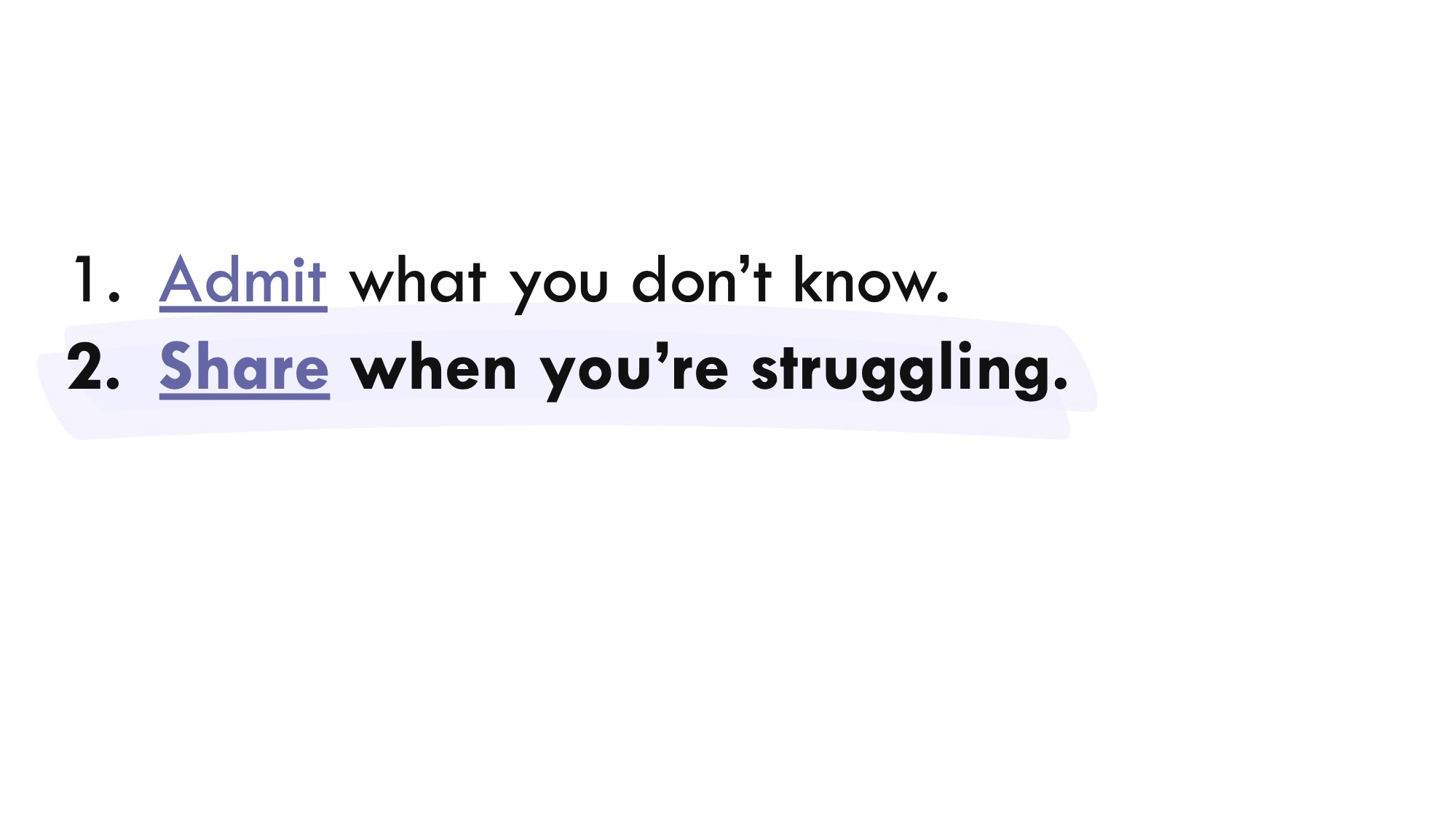
Share when you are struggling.
It's okay to talk to people about things you're struggling with, whether it’s a specific project, a personal issue, or something else. It's important to be honest about what you're going through, and like I already mentioned, you can do this while respecting your boundaries and not disclosing every detail.
For example, you have something happening in your personal life that’s making it difficult for you to focus. Instead of suffering in silence and having it negatively impact your work, you can have the courage to be vulnerable and talk to your team and say “hey, I’ve got something going on in my life that I’m struggling with and I wanted you to know. I’ll check in with you if I need help, but I may need to take some time off.”
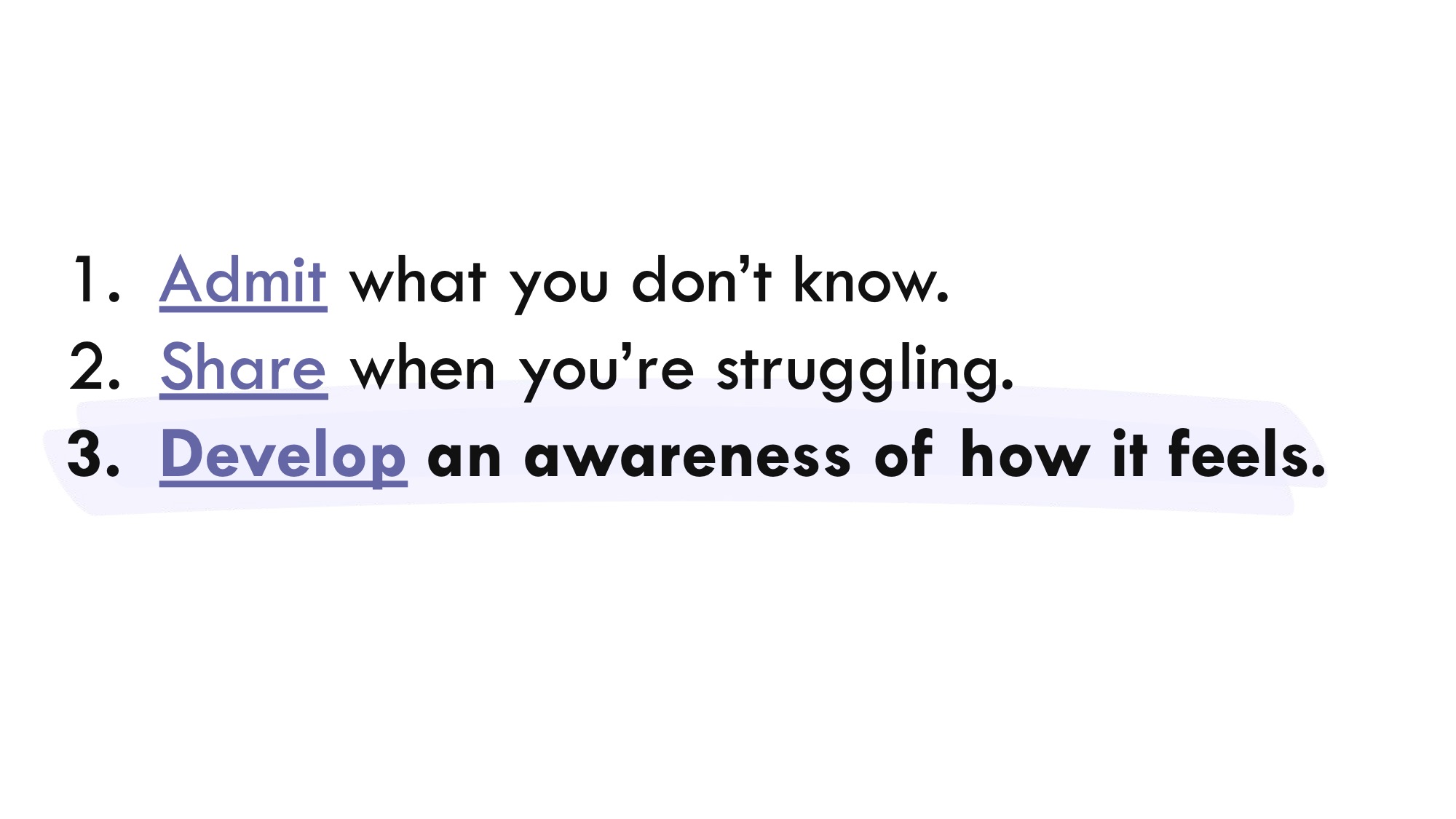
Develop an awareness of how vulnerability feels.
Allow yourself to really feel your emotions and check in with yourself. Eventually, you'll become more comfortable with vulnerability and more easily recognize how it feels.

Find a friend to practice with.
Being vulnerable can be intimidating, so the best advice I can give you is to practice vulnerability with someone you already trust. This could be your manager, a mentor, a peer or a friend. We need to trust to be vulnerable, and we need to be vulnerable to build trust. Often it feels like a leap of faith, being the first to be vulnerable. But the more you practice vulnerability, the more comfortable you will become with it.
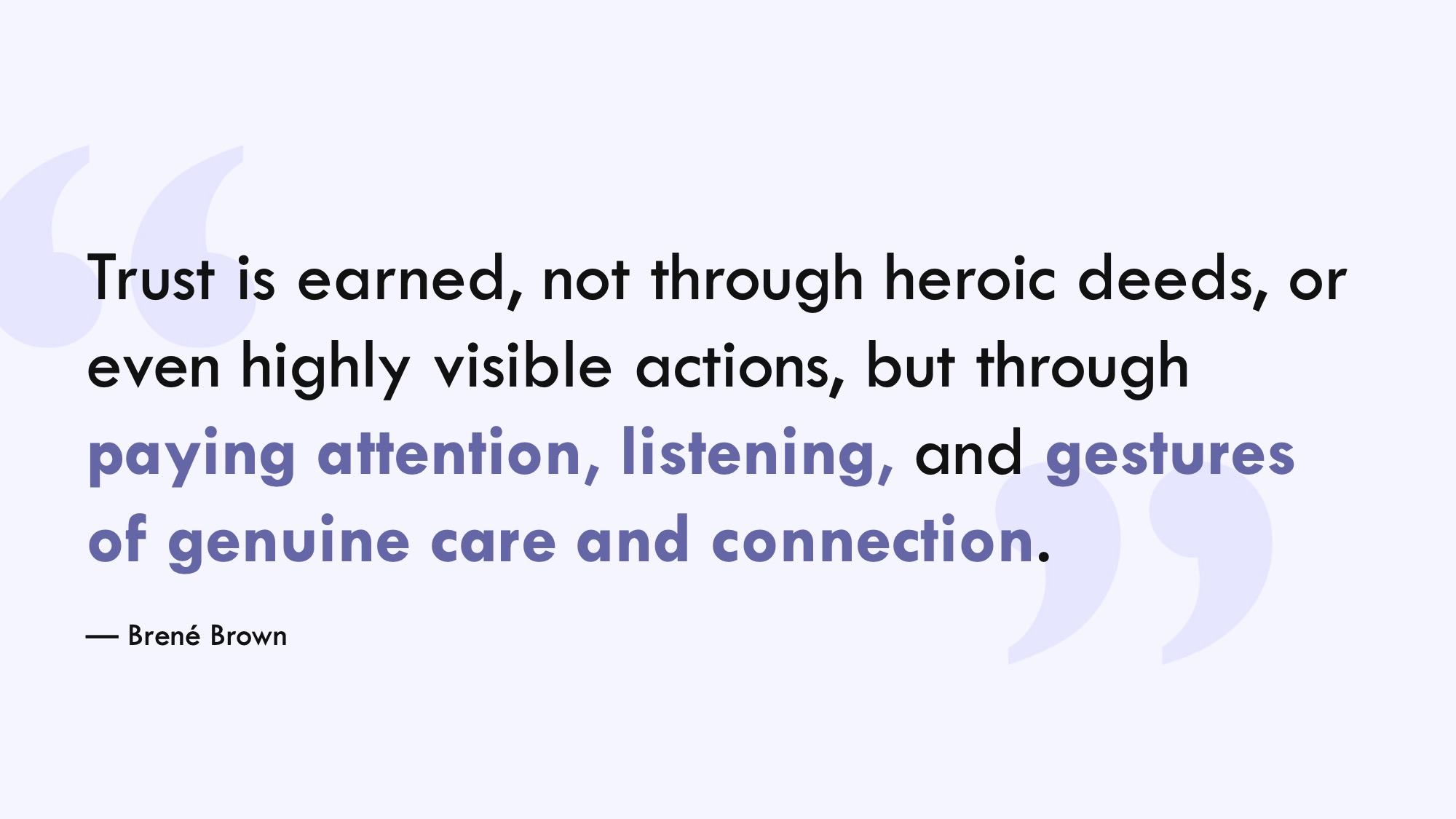
I’d like to leave you with this quote by Brené Brown (she’s the best!)
"Trust is earned, not through heroic deeds, or even highly visible actions, but through paying attention, listening, and gestures of genuine care and connection."
As leaders, showing that you can be vulnerable at work gives others the permission to open up and be vulnerable too, ultimately creating a psychologically safer space for our teams. If we want to foster healthy debate, for people to share their ideas, seek feedback, and ask for help, we need to lead by example and lead with vulnerability.
